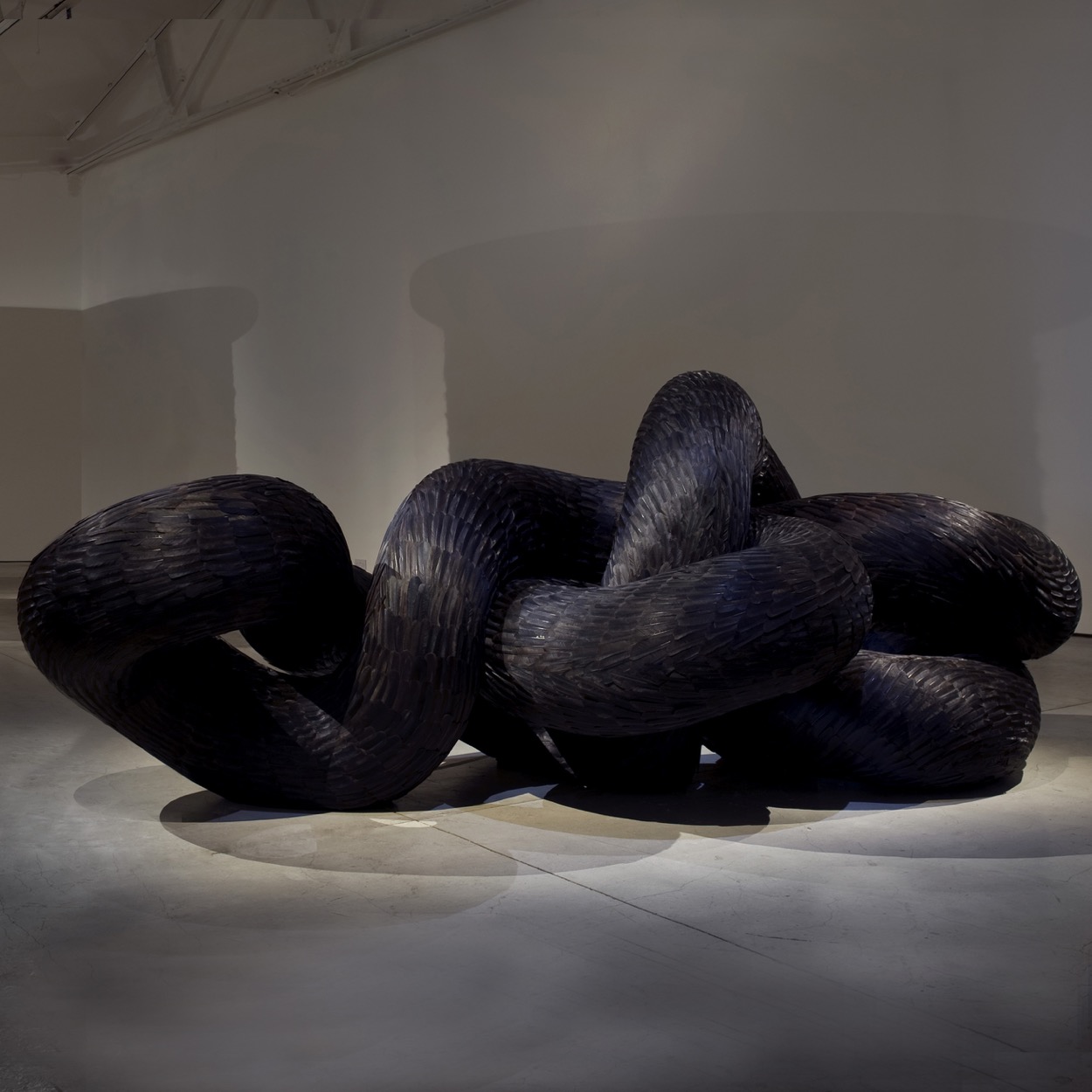You made feathers your medium. Can you explain to us where it comes from? Is there a particular symbolism attached to it?
As an artist, I have always worked with organic material, but I had the idea of working with feathers some twenty years ago, after stumbling across some fallen pigeon feathers that landed by the 113 year old Dutch barge/studio. It brought back memories of growing up on the Norfolk Broads and its distinct landscape dominated by wetlands, serpentine waterways and wildlife. I started to collect, clean and arrange the feathers and quickly realised that the lengthy process of handling and sorting enabled me to understand my material on a more intimate level. Working with feathers is compelling and hypnotic – I lose myself in it for hours, working instinctually – you can’t plan how to lay the feathers out, nor can you really teach someone. Each unique feather contributes to the overall patterning of a piece, and it is this implicit sense of movement in the shifting colours and gentle curve of each filament that brings the work to life.
You often describe your work as an interrogation of the notion of beauty and repulsion. Is there a particular piece that reflects the prototype of this idea, or does all your production reflect the same toward this ambivalence? Can you explain to us what makes something beautiful or repulsive in your perception?
I am interested in the interplay of opposites which runs like a leitmotif through everything I do. Writhing, muscular forms of my sculptures delight the senses without allowing the viewer to get too comfortable. My work needs tension to create its own internal equilibrium – I explore dualities of aesthetics, being simultaneously seductive and repulsive; form, being simultaneously organic and abstract; and movement, appearing fluid yet being static.
What can you tell me about the shapes of your work? They appear without beginning or end, a continuous renewal. How forms and materiality are connected in your practice?
My work is inspired by cycles, shapes and dualities in nature, most importantly, the transient patterns formed in water, visible for a second and gone the next. The use of organic materials and patterning in my work often creates implication of creatures that are avian or reptilian, but I like to imagine that my work hovers somewhere between representation and abstraction.
 https://www.nastymagazine.com/wp-content/uploads/2020/11/MARC-STRAUS-JONG-OH-2018_09.jpg
1013
1500
admin
https://www.nastymagazine.com/wp-content/uploads/2015/02/new-logo-basker-WHITE4.png
admin2020-11-11 19:02:402021-04-11 21:07:51Jong Oh / Spatial experience
https://www.nastymagazine.com/wp-content/uploads/2020/11/MARC-STRAUS-JONG-OH-2018_09.jpg
1013
1500
admin
https://www.nastymagazine.com/wp-content/uploads/2015/02/new-logo-basker-WHITE4.png
admin2020-11-11 19:02:402021-04-11 21:07:51Jong Oh / Spatial experience














